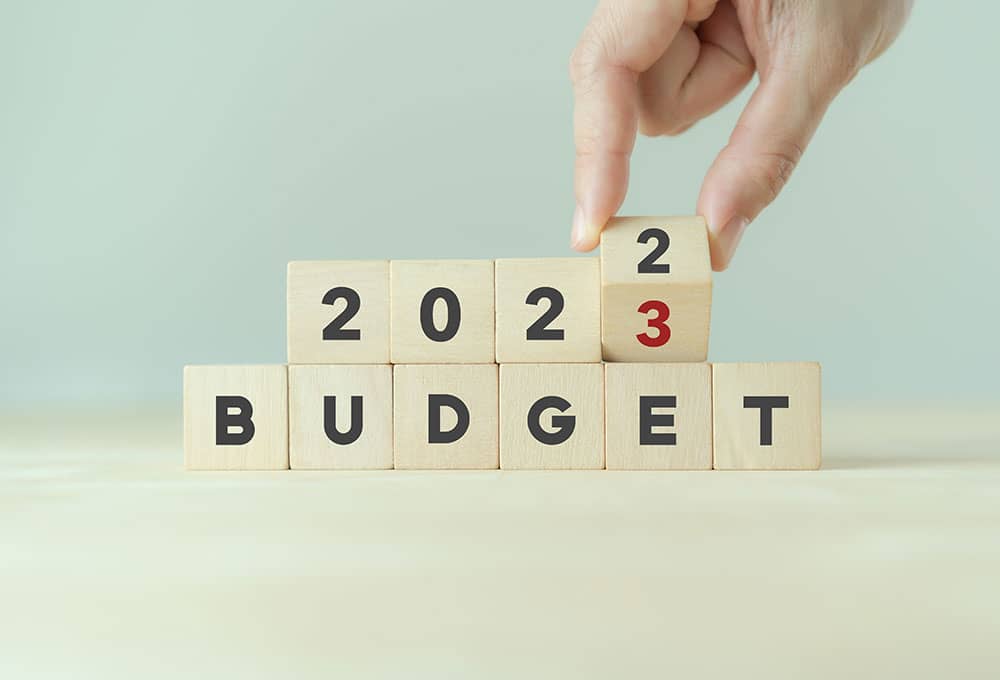Another year, another budget plan. But this time, it’s a little different from the past Budgets, specifically because of the pandemic. As Australia’s economy rebounds, careful drafting of the Federal Budget is more crucial than ever.
The new Australian 2022-23 Budget was publicised last 29 March 2022 by Josh Frydenberg. As always, it is part of the country’s plan for a stronger and more stable future, particularly when it comes to economic performance.
The Federal Budget 2022-2023 is centred on the costs of living relief for the short term, with the Federal Election around the corner. There are a few future plans, as well, focusing more on sustainability. Unfortunately, there wasn’t any significant help towards taxes, aside from the cost of living tax offset, despite the public clamour for major tax reform. The Budget revolved around these five targets:
- Deliver more jobs and reduce unemployment to less than 4%
- Invest in more robust and effective tactics in security, borders, and defence
- Continue investments across specific essential sectors, including education, health, and women’s safety
- Provide relief to living costs of Australians whilst supporting local small businesses
- Devote more funds to projects that are geared toward the country’s future, such as roads, dams, and renewable energy technologies
This blog talks about the changes above and how they can affect you as an individual or business.
The Continued Support for Businesses Towards Economic Recovery
Small businesses are the primary beneficiaries of the new Federal Budget. As the Australian economy recovers, further measures were introduced that aim to help businesses, particularly small businesses and their cash flow. Regulatory modifications to the employee share scheme rules were also announced, along with the expansion of the Patent Box Regime.
Small business measures include:
- A Small Business Support Package includes a $4.6 million boost under the New Access for Small Business Owners program to offer small businesses free, customised mental health support. Another $2.1 million will be allotted to the Small Business Debt Helpline program for financial counselling. A $10.4 million budget will go to Payment Times Reporting Portal and Register for its enhancement and redesign. Finally, $8 million will be used by the Australian Small Business and Family Enterprise Ombudsman to help the financial capabilities of small businesses.
- Technology investments of businesses also get a boost in the Budget. This temporary boost provides small businesses with another 20% deduction for expenses incurred from 7:30 PM (AEDT) when the Budget was announced on 30 June 2023. This deduction applies to all business purchases and costs of depreciating assets used in the businesses’ digital projects and adoption. For example, buying portable payment devices, e-invoicing systems, and cyber security solutions will allow a small business to qualify for the 20% tax deduction.
- Skills and training to upskill employees can also grant businesses a 20% tax deduction for expenditures on external training courses. Eligibility is restricted to employees in Australia. The training courses should be delivered by Australian-registered entities in order to qualify. They should take place between 7:30 PM (AEDT) on 29 March 2022 to 30 June 2024. Online training courses count, but in-house or on-the-job training will be excluded.
The expenditures should be incurred by 30 June 2022 or between 1 July 2022 and 30 June 2023 to get the additional 20% tax boost. The former only applies to the tax return in the following year, while the latter depends on the income year in which the expense took place. Both boosts can be claimed, but there is an annual expenditure cap of $100,000. Additionally, only those with annual turnovers of less than $50 million will be eligible for the two temporary tax boosts.
The Government also announced the expansion of the Patent Box regime, which will now benefit corporate taxpayers involved in commercialising certain patents related to technological innovations that are useful to the country’s agricultural sector and technologies that may assist in lowering emissions. Previously in the 2021-22 Budget, when the regime was first discussed, it was only for medical and biotechnology patents.

Benefits to Primary Producers
In the lead up to the 2022-23 Budget, the Government proclaimed that incomes derived from the sale of Australian Carbon Credit Units (ACCUs) and biodiversity certificates will be considered as primary production income starting 1 July 2022. Therefore, the ACCUs’ taxing point will be modified from the mentioned date up to the year they are sold. This aims to inspire primary producers to look for diverse revenue sources. At the same time, they will be allowed to access tax concessions, which are applied to primary production income, such as income tax averaging and Farm Management Deposit (FMD) Scheme.
Employment Measures
The 2022-23 Budget also included the expanded use of Single Touch Payroll Data (STP), enabling the sharing of payroll tax returns in State and Territory Governments. This move aims to improve the accuracy of tax return lodgements while reducing compliance costs and saving more time for over 170,000 businesses that have payroll tax reporting duties.
The Government also helps apprentices and trainees through the Boosting Apprenticeship Commencements and Completing Apprenticeship Commencements subsidies. Employers offering wage subsidies can apply the initiative to new apprentices. Enrolments are extended until the end of June 2022, which was previously 31 March 2022.
Employers with apprentices or trainees until the end of June can qualify for:
- 50% of the apprentice’s wages in the first year up to $7,000 per quarter for every eligible trainee
- 10% of apprentice’s wages in the second year up to $1,500 per quarter per trainee
- 5% of the wages in the third year up to $750 per quarter per apprentice
The Budget also included COVID test tax deductions for expenses from 1 July 2021, which will prevent fringe benefits tax (FBT).
It’s worth mentioning that even though this is not a measure from the Federal Budget, the superannuation guarantee rate will be increased starting 1 July 2022. The current rate is 10% and will be 10.5% from the said date. Additionally, the 2021-22 Budget measure involving the removal of the $450 per month minimum wage or salary threshold will be enacted. That means low-income employees will receive SG support from the beginning of July.
How the New Budget Affects Individuals
The Federal Budget has plenty of amendments that will impact Australians, including:
-
- 50% Discount on Fuel Taxes for Six Months
An immediate temporary reduction to fuel taxes was announced, covering fuel excise and excise equivalent customs duty rates for fuels like petrol and diesel. The only exception is aviation fuel. The tax will be halved starting 30 March 2022 until 28 September 2022 as part of measures for the cost of living pressures in the country. Currently, the excise tax for petrol and diesel is about 44.2 cents per litre, which will be 22.1 cents per litre with the discount.
- 50% Discount on Fuel Taxes for Six Months

-
- Cost of Living
Two new measures are intended to help ease the cost of living for low to middle-income individuals (LMI):
- Cost of Living Tax Offset: An improved version of last year’s initiative, the Government will increase the LMI tax offset up to $1,500 – a $450 increase. All recipients will benefit from this change, with the exception of those who do not need the full offset to have their tax liability to zero. The current features of the LMITO remain, so those with incomes of at least $126,000 will not get the $420 tax offset.
- Cost of Living Payment: A $250 economic support payment will be provided to eligible recipients of age pension, parenting payments, Jobseeker payments, Youth Allowance, and Disability Support. This support payment is exempt from taxes and does not need to be declared as income support in the tax return.
These measures are a welcome relief to vulnerable Australians, albeit a temporary fix.
- Extension of Lower Superannuation Minimum Drawdown Rules
Self-funded retirees can still choose to reduce their minimum pension drawdown by 50% until 30 June 2023. This measure was introduced back in 2020 as part of the country’s response to COVID’s impact on investment markets. The goal is to help pension members withdraw less from their retirement savings so they can leave a more significant amount for the future.
- Paid Parental Leave
Enhancing the Women’s Economic Security Package, which was introduced in the 2021-22 Budget, the Federal Government announced the Paid Parental Leave Scheme for the 2022-23 Budget. This scheme unites Dad and Partner Pay into one Parental Leave scheme of up to 20 weeks. It’s fully flexible, too, allowing the benefit to be shared between working parents.
The parental leave changes will cost the Government more than $346 million over five years. It will help families take leave whenever they need to within two years of the birth or adoption of a child. But don’t rush just yet. The measure will not be in effect until 1 March 2023.
- Housing Affordability
The First Home Guarantee and Family Home Guarantee Schemes are better than ever. The Government provides more bolstered support for first home buyers and single parents. The schemes will help people break into the property market with lower deposits: 5% for First Home Guarantee and 2% for Family Home Guarantee.
The Home Guarantee Scheme was first introduced in 2021 and provided 10,000 mortgage loans for eligible persons. This year, the Government plans to deliver more financial assistance, extending the reach of the scheme to 35,000 locations for first home buyers and 5,000 for single parents. Additional 10,000 places will be allocated to people in regional areas, which the new Regional Home Guarantee will cover.
- Other Measures
- A range of measures focuses on flood relief with more than $6 billion in budget to help communities affected by floods.
- The Government is reinforcing its programs to prevent or even end violence against children and women with a $1.3 billion budget.
- Combating suicide will be of national importance. The government plans to spend $2.3 billion on mental health and suicide prevention programs.
- Cost of Living
For more information about the 2022-23 Budget.
Overall, the Government has retained a considerable portion of its revenue payouts while spreading some percentage to initiatives that would alleviate the cost of living. Businesses and certain groups of individuals are clear winners, such as taxpayers and motorists.
While there is a technological focus, the Budget does not have direct funding for renewable energy projects in the future. Wages do not seem to be a concern. Still, with the predicted high inflation later this year, no employee is looking forward to uncertainty.
Perhaps the biggest losers of them all are the tax evaders. The ATO Tax Avoidance Taskforce has expanded, giving more concentration on large corporations, high-wealth persons, and multinationals. That means a more stringent program will be in place to protect the country’s tax system and its integrity. That’s a win-win for the Government and all honest Australian taxpayers.
Let us take care of your tax return so you can pay it diligently on time. Contact us to see how we can help or start your tax return here. You can start and stop anytime.
*General Advice Warning – “Any financial product advice provided by TaxReturn.com.au is general in nature and is not personal financial advice. It does not take into account your objectives, financial situation, or needs. Before acting on any information, you should consider the appropriateness of it regarding your own objectives, financial situation and needs.”


